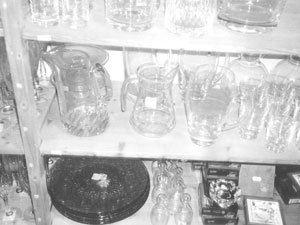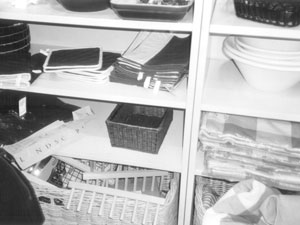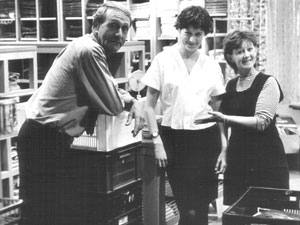

 |
|
Department store sells trash
In the nineties, during the internet boom, Elena Simons founded the Institute for Economic Disharmonisation. The official goal was to cause an economic crisis. Through this message, the members aimed to provide a different perspective on wealth.
One of the actions took a few weeks of nighttime preparation. On trash nights, members of ‘the Institute’ looked through heaps of garbage waiting to be collected and found many nice items that were as good as new. A woolen scarf, a cup and saucer, a book, a tray, a jug, a comb. All of these products were of a quality you might find at a department store.
In a café near the luxury department store The Bijenkorf in Amsterdam, the Institute gathered all 207 products that had been given a little cleaning. They went into the store and secretly snatched price tags from a woolen scarf, cup and saucer, book, tray, jug and comb. At the café, they attached the price tags to their own objects. Next they went back into the store carrying a few items at a time in plastic bags. Acting as reverse thieves, they put the objects up on the shelves unnoticed. The Bijenkorf could sell these items as new, thus making almost 3000 guilders (1400 euros).
It’s hard to determine how many of the parasitic products actually were sold. Ten days after placing the products, the Institute informed the press. Several newspapers brought the news and also interviewed a department store spokesperson to hear her reaction. “Staff did notice there were some things that didn’t belong here,” she said, “but we thought the distribution centre had made a mistake.”
While it seems likely that some of the products went unnoticed were sold, it’s certain that at least one was purchased. To test the result, Elena Simons went back to the store the next day and bought a little basket. “That will be 7.50,” said the lady at the cash desk as she scanned the bar code, “would you like a bag?”

|
